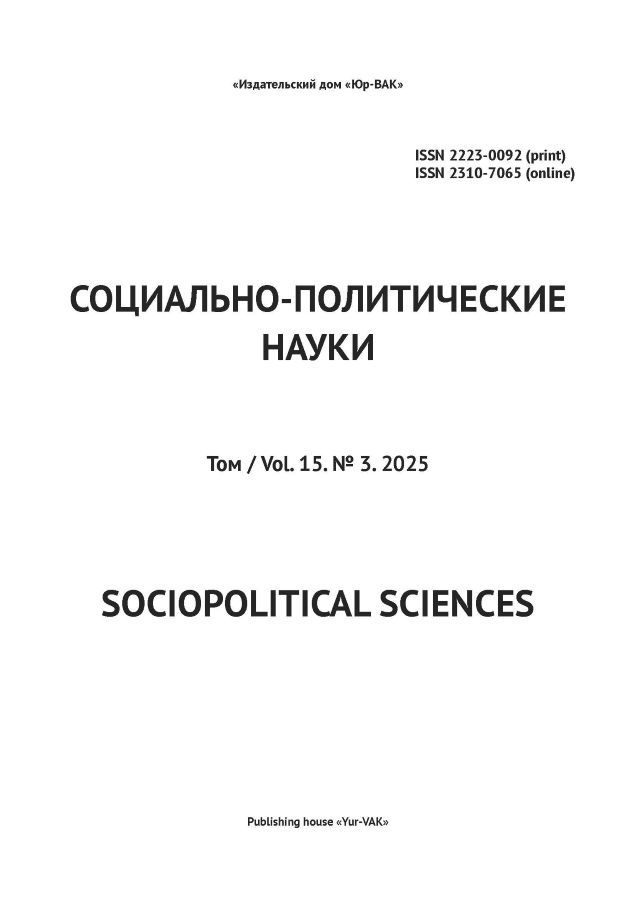Правовой опыт маркирования «невидимизированных» религиозных стигматизаций (по материалам ПСЗРИ)
- Авторы: Аринин Е.И.1, Волкова В.Е.1
-
Учреждения:
- Владимирский государственный университет им. Александра Григорьевича и Николая Григорьевича Столетовых
- Выпуск: Том 15, № 3 (2025)
- Страницы: 229-235
- Раздел: Философия религии и религиоведение
- URL: https://journals.eco-vector.com/2223-0092/article/view/687924
- DOI: https://doi.org/10.33693/2223-0092-2025-15-3-229-235
- EDN: https://elibrary.ru/SJPKSW
- ID: 687924
Цитировать
Полный текст
Аннотация
Данная работа представляет собой религиоведческий анализ ряда текстов первого тома первого собрания «Полного Собрания Законов Российской Империи» (далее – ПСЗРИ), сосредоточенный на феномене «невидимизации» религиозных сообществ, который рассматривается через призму нормативных предписаний и стигматизаций. Целью исследования является изучение нескольких ключевых понятий в области религиоведения, а именно концепции «невидимизации», введенной Никласом Луманом, с акцентом на два ее основных аспекта: 1) невозможности одновременного наблюдения за явлениями и вести самонаблюдение и, 2) ведения контроля за сакральной реальностью. В ходе анализа ряда документов XVII в. демонстрируется то, как формировалась «религиозная стигматизация», которая проявлялась в правовых предписаниях, касающихся наказаний «за отклонения от нормы». Таким образом, ПСЗРИ выступало не только юридическим сводом, но и инструментом, визуализирующим ранее «незримые» для властей религиозные меньшинства.
Ключевые слова
Полный текст
Об авторах
Евгений Игоревич Аринин
Владимирский государственный университет им. Александра Григорьевича и Николая Григорьевича Столетовых
Автор, ответственный за переписку.
Email: eiarinin@mail.ru
SPIN-код: 5251-4026
Scopus Author ID: 37060239800
доктор философских наук, профессор; заведующий кафедрой философии и религиоведения
Россия, ВладимирВалерия Евгеньевна Волкова
Владимирский государственный университет им. Александра Григорьевича и Николая Григорьевича Столетовых
Email: volkova170204@outlook.com
SPIN-код: 8635-4843
студент кафедры философии и религиоведения
Россия, ВладимирСписок литературы
- Аринин Е.И., Волкова В.Е. Феномен маски между невидимизацией и визуализацией воображаемого «незримого» (религиоведческие аспекты) // Свеча. 2023. № 40. С. 14–22.
- Аринин Е.И., Волкова В.Е. Маска в эпоху цифровизации: между визуализацией сакрального и невидимизацией истинного // Гуманитарные ведомости ТГПУ им. Л.Н. Толстого. 2024. Т. 2. № 3. С. 108–117.
- Авдеев А.Г. Новые эпиграфические источники о моровом поветрии в 1654 г. в Московской Руси // Вестник ПСТГУ. История Русской Православной Церкви. 2021. № 1 (40). С. 121–132.
- Брокгауз Ф.А., Ефрон И.А. Артаксерксово действо // Энциклопедический словарь Брокгауза и Ефрона. СПб.: Семеновская Типолитография (И.А. Ефрона), 1890. Т. II (3). С. 180.
- Даль В.И. Толковый словарь живого великорусского языка. В 4 т. / ред. И.А. Бодуэн де Куртенэ. 3-е изд., испр. и значительно доп. СПб.; М.: Т-во М.О. Вольф. Т. 4. 1909. 1619 с.
- Живов В.М. Два пространства русского средневековья и их позднейшие метаморфозы. URL: https://web.archive.org/web/20170303123013/http://magazines.russ.ru/oz/2004/5 (дата обращения: 17.03.2025).
- Ключевский В.О. Курс русской истории. Т. 3. Ч. 3. М.: Мысль, 1988. 414 с.
- Луман Н. Дифференциация / пер. с нем. Б. Скуратова. М.: Логос, 2006. 320 с.
- Нестор Летописец. Повесть временных лет / пер. Д.С. Лихачёва, О.В. Творогова. СПб.: Вита Нова, 2012. 512 с.
- Полное собрание законов Российской империи. Собрание 1-е. С 1649 по 12 декабря 1825 г. Т. 1. СПб., 1830. 1029 с.
- Lemert E.M. Human deviance, social problems and social control. Englewood Cliffs, 1967. 292 p.
Дополнительные файлы









